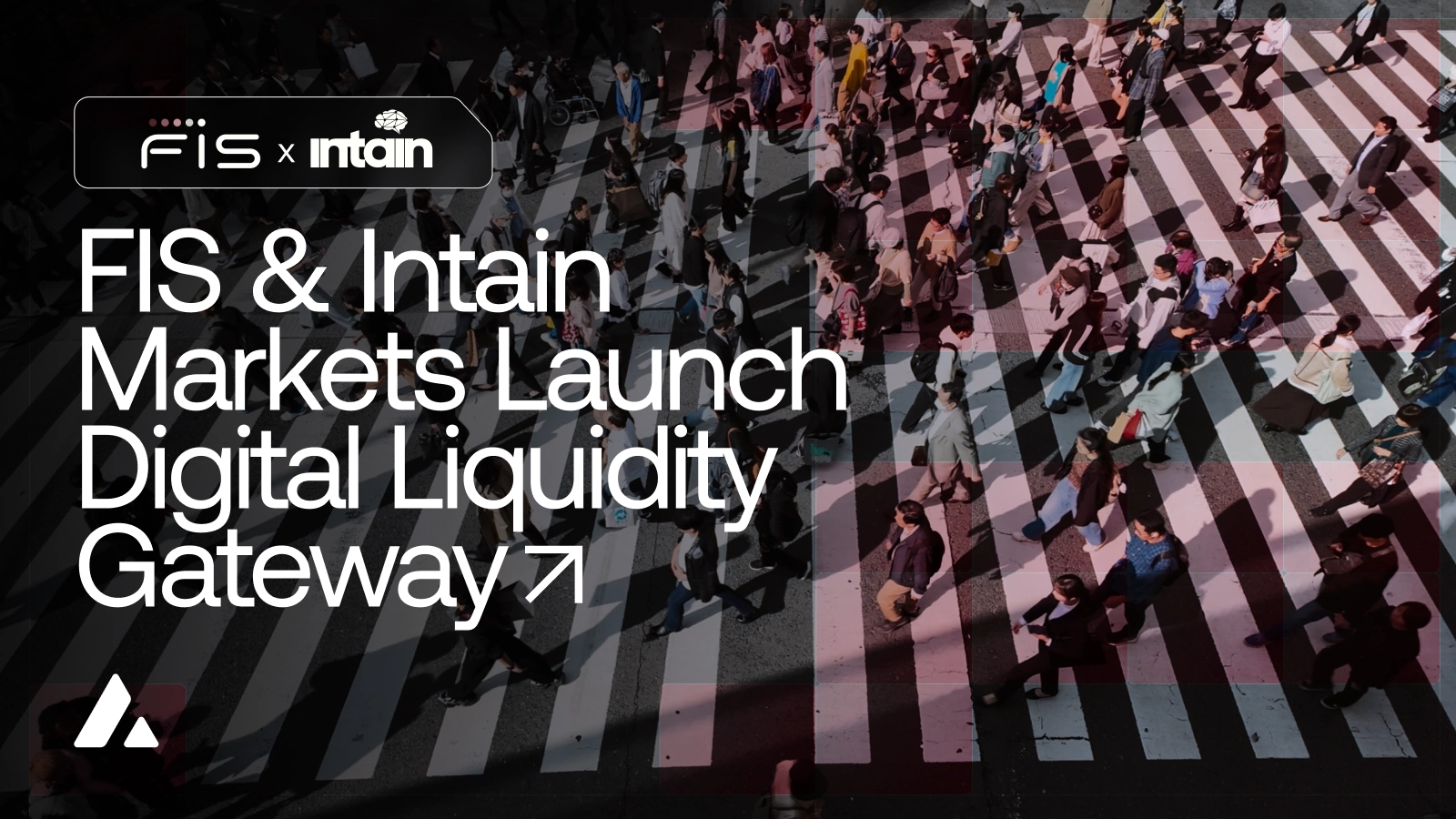Blockchain Adoption in Latin America According to An Argentine Lawyer
Blockchain Adoption in Latin America According to An Argentine Lawyer
May 2, 2025 / By Avalanche / 8 Minute Read

From Gaming to Digital Identity, The Region is Experiencing a Quiet Boom In Blockchain Usage
When Leandro Davo first joined Ava Labs in 2022, he brought with him a uniquely positioned background at the intersection of technology and law. Davo previously focused on entrepreneurs and startups in his native Argentina which turned out to be a valuable asset for his future work in the crypto sector. When the COVID pandemic hit, Davo, like many around the world, began to dive into the multifaceted world of blockchain. Through his exploration and education, he discovered Avalanche and eventually joined the team.
Davo now leads Ava Labs’ efforts across Latin America. With an innate sense for spotting developments in the blockchain space with the power to solve real-world problems while bringing new users to Web3, Davo’s personal journey also mirrors the path of the industry across the region. His journey can be described as unlikely at first, but rapidly gaining momentum. As he tells it, the explosive growth of crypto in Latin America isn’t just about technology. It’s about economics, culture, and the everyday needs of people who have long been underserved by financial systems.
Transforming Argentina into a Web3 Powerhouse I Avalanche Summit LATAM
Remittances and a thirst for tokenized real-world assets
Remittances are the most common way people interact with blockchain and crypto in Latin America. Countries like Mexico with large diaspora populations have embraced stablecoins as reliable financial tools to solve their remittance needs. In Argentina, where inflation is a daily concern, digital dollars help protect savings and money movement. What began as a retail phenomenon is now expanding into business infrastructure. Companies are turning to stablecoins for cross-border payments because blockchain alternatives are quicker and cheaper than traditional systems which generally route everything through U.S. banks.
One of the companies Davo is watching closely is Nonco, a Mexican startup building more efficient foreign exchange markets by bridging fiat and stablecoin rails. It’s exactly the kind of solution needed for a region where sending money between neighbors often feels harder than it should. Blockchain can underpin a new economic infrastructure that removes the complexity of the region’s cross-border commerce. Such infrastructure doesn’t just benefit crypto-native companies. It makes life noticeably easier for small businesses, freelancers, and anyone else moving value across borders.
Connected to this push for a modern financial infrastructure using blockchain is a growing appetite for tokenized real-world assets (RWAs). After years of using stablecoins to guard against inflation, people are exploring blockchain’s wider applications like real estate and stocks and bonds. In Argentina, the national regulator is drafting a policy to specifically allow tokenized financial instruments much like Japan is exploring. It’s still early, but Davo sees clear demand. "People want more options. They want to invest. Tokenization makes that possible without needing a broker or a special account."
He also points to emerging interest in tokenizing rental income and agricultural commodities in Paraguay and Uruguay. While current legislation limits complete tokenization, interest and momentum are building. Beyond simply bringing traditional finance on-chain, tokenization recasts who gets access to wealth and ownership. It’s an issue that carries extra weight in Latin America since these are regions where access to investment opportunities have traditionally been limited to a small elite. Blockchain has the potential to change this system.
Big questions from the public sector
As the ecosystem matures, the public sector is starting to ask questions too. Davo sees growing interest from government officials in understanding blockchain and where it fits into their plans for the future. As in other parts of the world, Argentina’s younger public officials are especially open to learning. They see how blockchain can reduce bureaucracy, improve transparency, and deliver services more efficiently. The challenges they face in legacy systems steeped in bureaucracy are real. However, the conversations have started and that's encouraging for Davo. This has led to some promising pilot programs across the region for land registries, digital identity, and supply chain traceability. Davo says these aren’t splashy headline projects, but they are laying the groundwork for the future. They help local leaders see blockchain not as hype, but as infrastructure. Public & Private Collaboration: Government’s Role In Blockchain Adoption I Avalanche Summit LATAM
Such projects also help build trust between the crypto ecosystem and policymakers. Davo believes it’s critical for public officials to meet the people actually creating useful things with blockchain. He is optimistic about the shift, even if it takes time. "When you get the right people in the room, good things can happen,”explains Davo.
Trends you can’t see: Quiet blockchain adoption
Not all blockchain use is up front and center; there are myriad trends invisible to most but with an outsized impact. Davo points out that much of the region is already using blockchain without realizing it. Fintech apps increasingly rely on stablecoins and crypto infrastructure behind the scenes. From cross-border transfers to simple purchases, blockchain is being abstracted away from the end user.
An Argentine company in the electronic music space exemplifies this by issuing NFT-based tickets for events–and to the user, it’s just a digital ticket that works. No friction. No education needed. It’s Web3, running like Web2.
"That’s the goal," Davo says. "To make the tech invisible." Similarly the globally recognized Avalanche Card that runs on Visa rails exemplifies this. “The card links to a self custodial wallet instead of a bank account that can be loaded with AVAX and stablecoins using a mobile app. To the user and the merchants, it’s just a card that works.”
He’s not alone in thinking this way. Across Latin America, builders are realizing that mass adoption won’t come from teaching everyone how wallets work. It will come from building better experiences that happen to use blockchain under the hood. In this way, Latin America is skipping some of the awkward learning phases other markets have gone through. It’s utility first, ideology second.
Digital identity, slowly arriving
For Davo, one of the most important but often neglected trends taking shape is digital identity. Several governments are now rolling out blockchain-based systems to issue digital driver’s licenses and other credentials. Countries like Panama, El Salvador, and Suriname are among the first movers. These are early steps, but Davo sees big potential in how these systems reshape trust and ownership.
Most people think of blockchain as finance. But with identity records, it works in the background. Digital IDs let citizens prove who they are, log into government services, or confirm their legal status without handing over unnecessary data. The documents live in a secure app on your phone. They are cryptographically verified on-chain and controlled by the individual. The doctor turned developer behind AutoPen is a solid example of digital identity and digital signatures exploration built on Avalanche.
The importance of this shift can’t be overstated even if it’s not as headline-grabbing as tokenized RWA. Davo says digital identification is one of the few places where blockchain gets wide adoption without resistance. The technology improves security and privacy, but doesn’t stir political concerns. Instead of hosting sensitive data on hackable servers, the records live on a decentralized network. Davo believes this is what real blockchain adoption looks like. It’s useful and already happening.
Sectors to watch beyond the hype bubble: Gaming
Gaming is reemerging across the region, this time without the hype. During the Axie Infinity boom, people in Latin America were earning real income from play-to-earn games. Some even left their jobs. But when prices crashed, reality hit hard. Now, the games getting attention are built for entertainment first. Players are joining to enjoy the experience, not just flip tokens.
As such, Web3 gaming in 2025 feels different to Davo. It’s less about speculation and more about community since people are playing for the fun of it. In cities like Buenos Aires and Bogota, groups of gamers have discovered blockchain-enabled games that don’t feel like finance platforms. "It feels healthier," Davo says. "The games are better. The players are more grounded."
This shift reflects a larger maturity across the industry. Web3 builders are no longer chasing quick fixes or market cycles. They are listening to users and designing for the long haul. For Davo, that’s a good sign for the entire ecosystem, not just gaming.
Latin America isn’t a country
One point Davo is adamant about when it comes to the future blockchain trends is that Latin America is not one country. Every country has its own use cases, economics, and cultural dynamics. In Mexico, remittances dominate the crypto conversation. In Brazil, it’s institutional capital. In Argentina, it’s survival. Moreover, each country is different in terms of size and user adoption. Still, despite the differences, there is a common thread. The region is hungry for solutions. People are curious. And they are bringing a sense of pragmatism to Web3 that’s often missing in more speculative markets.
Davo says even the media landscape is starting to reflect this shift. While mainstream coverage of crypto still tends to focus on scandals and volatility, there’s growing interest in how blockchain solves problems people care about. "We’re not here for hype. We’re here to solve real problems." In Latin America, blockchain isn’t just about new technology. It’s about access, opportunity, and, above all, trust. The fundamentals are taking root before our eyes as the noise fades. And for keen observers like Davo, that’s where the real story begins.




